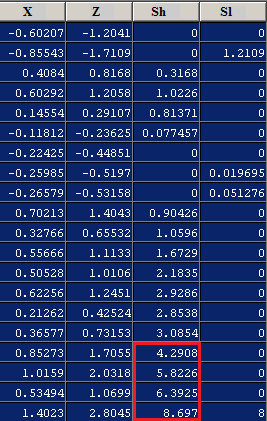CUSUM
CUSUM (Cumulative Sum Control Chart) is a type of control chart used in statistical quality control to monitor small shifts in the process mean. It is particularly effective for detecting small and persistent changes in the process.
Overview[edit | edit source]
CUSUM charts are used to monitor the cumulative sum of deviations from a target value. Unlike traditional Shewhart control charts, which only consider the most recent data point, CUSUM charts take into account the history of the process, making them more sensitive to small shifts.
History[edit | edit source]
The CUSUM method was first introduced by E. S. Page in 1954. It has since become a widely used tool in various industries, including manufacturing, healthcare, and finance.
Methodology[edit | edit source]
The CUSUM chart is based on the cumulative sum of deviations from the target value. The cumulative sum is calculated as follows:
S_i = max(0, S_{i-1} + (X_i - \mu_0 - k))
where:
- S_i is the cumulative sum at the i-th observation
- X_i is the i-th observation
- \mu_0 is the target value
- k is the reference value or allowable slack
The process is considered out of control if the cumulative sum exceeds a predetermined threshold.
Applications[edit | edit source]
CUSUM charts are used in various applications, including:
- Manufacturing: Monitoring production processes to detect shifts in the mean.
- Healthcare: Tracking patient outcomes to identify changes in treatment effectiveness.
- Finance: Monitoring financial metrics to detect shifts in performance.
Advantages[edit | edit source]
- High sensitivity to small shifts in the process mean.
- Ability to detect persistent changes over time.
- Useful for processes with low variability.
Disadvantages[edit | edit source]
- More complex to implement compared to traditional control charts.
- Requires a larger amount of historical data for accurate monitoring.
Related Pages[edit | edit source]
See Also[edit | edit source]
References[edit | edit source]
External Links[edit | edit source]
This article is a statistics-related stub. You can help WikiMD by expanding it!
Search WikiMD
Ad.Tired of being Overweight? Try W8MD's physician weight loss program.
Semaglutide (Ozempic / Wegovy and Tirzepatide (Mounjaro / Zepbound) available.
Advertise on WikiMD
|
WikiMD's Wellness Encyclopedia |
| Let Food Be Thy Medicine Medicine Thy Food - Hippocrates |
Translate this page: - East Asian
中文,
日本,
한국어,
South Asian
हिन्दी,
தமிழ்,
తెలుగు,
Urdu,
ಕನ್ನಡ,
Southeast Asian
Indonesian,
Vietnamese,
Thai,
မြန်မာဘာသာ,
বাংলা
European
español,
Deutsch,
français,
Greek,
português do Brasil,
polski,
română,
русский,
Nederlands,
norsk,
svenska,
suomi,
Italian
Middle Eastern & African
عربى,
Turkish,
Persian,
Hebrew,
Afrikaans,
isiZulu,
Kiswahili,
Other
Bulgarian,
Hungarian,
Czech,
Swedish,
മലയാളം,
मराठी,
ਪੰਜਾਬੀ,
ગુજરાતી,
Portuguese,
Ukrainian
Medical Disclaimer: WikiMD is not a substitute for professional medical advice. The information on WikiMD is provided as an information resource only, may be incorrect, outdated or misleading, and is not to be used or relied on for any diagnostic or treatment purposes. Please consult your health care provider before making any healthcare decisions or for guidance about a specific medical condition. WikiMD expressly disclaims responsibility, and shall have no liability, for any damages, loss, injury, or liability whatsoever suffered as a result of your reliance on the information contained in this site. By visiting this site you agree to the foregoing terms and conditions, which may from time to time be changed or supplemented by WikiMD. If you do not agree to the foregoing terms and conditions, you should not enter or use this site. See full disclaimer.
Credits:Most images are courtesy of Wikimedia commons, and templates, categories Wikipedia, licensed under CC BY SA or similar.
Contributors: Prab R. Tumpati, MD

